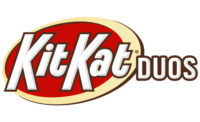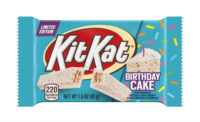The Hershey Co. using digital platform to improve transparency
Increased transparency could help boost consumer trust in large companies.

An example of information provided through the SmartLabel app.
As transparency becomes an increasingly important staple of the food industry, companies such as The Hershey Co. are turning to digital platforms to spread information.
Speaking in a webinar titled "The Transparency Revolution: What Food Companies Expect From Today's Supply Chain to Earn Trust," Charlie Arnot, ceo, The Center for Food Integrity, said that transparency is no longer optional for the food industry. It's become a basic consumer expectation.
Deb Arcoleo, director of product transparency, The Hershey Co., said transparency comes from two sides of the same coin. The first side involves the company's practices to ensure that its products are made to fit consumers' demands, while the other involves the way it communicates those practices to the public.
To that end, Hershey has been heavily involved in the development of the newly-launched SmartLabel platform.
"We really view transparency as the communication aspect," Arcoleo says.
Hershey has committed to creating products with simpler ingredients, pledging to remove all artificial colors and flavors from its sweets, as well as pursuing a sustainable supply chain. Its CSR report for 2015 outlines the company's progress toward those goals.
But it's not just about those practices. It's also about making that information accessible to consumers.
In 2014, Hershey began Project Looking Glass, an internal effort to develop a better transparency tool. Using consumer surveys and responses, the company developed a mobile solution and shared it with the Grocery Manufacturers Association to engage the broader food industry. It sparked a collaborative cross-company consortium, which led to the eventual launch of SmartLabel in December 2015.
The app allows users to scan a QR code on the package, which then displays a full suite of information from ingredients to product usage instructions and handling advisories.
With more than 2,000 items live on the app, SmartLabel could become a cross-industry solution to providing full disclosure to consumers.
Looking for a reprint of this article?
From high-res PDFs to custom plaques, order your copy today!









